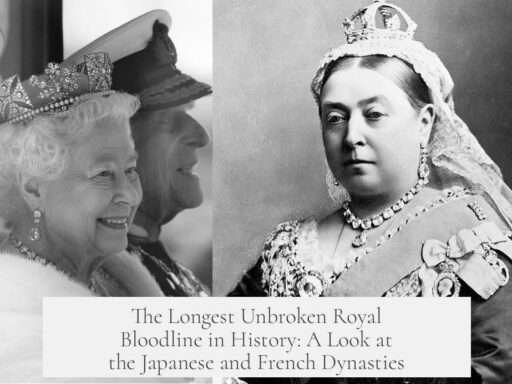The Dakotas are divided into two states—North Dakota and South Dakota—due to historical, demographic, and political factors tied to the Dakota Territory’s development and settlement patterns.
Initially, the Dakota Territory spanned a vast area with its capital at Yankton, now in southeastern South Dakota. The discovery of gold in the Black Hills in 1874 triggered a rush of settlers to the western part. This migration shifted the population centers and economic activity westward. The rise of railroads in the 1880s further influenced settlement patterns, making Yankton less accessible to many residents. Consequently, the territorial capital moved to Bismarck in the northern region, reflecting the changing population distribution.
By 1889, as the territory sought statehood, distinct population hubs had formed: a populous northeast area in present-day North Dakota and a dense southeast in present-day South Dakota. This natural division made a single state difficult to manage effectively.
The political climate also shaped the split. The Dakota Territory largely supported the Republican Party. Admitting two states instead of one meant adding two Republican senators, which benefited the party’s influence in Congress. Moreover, dividing the territory allowed settlers to be closer to their respective state capitals, providing practical governance advantages.
- Dakota Territory had its original capital in Yankton (current South Dakota).
- Gold discovery in 1874 attracted settlers to the Black Hills region.
- Railroads emerging in the 1880s shifted populations further from Yankton.
- Capital moved north to Bismarck to better serve the expanded population.
- By 1889, population centers were separated geographically.
- Political interests favored creating two states for more Senate representation.
- Dividing improved local governance by reducing distances to capitals.
This combination of geographic settlement patterns, political strategy, and administrative practicality explains why the Dakota Territory became North Dakota and South Dakota, two separate states sharing the Dakota name but distinct in governance and identity.
Why are there two Dakotas? The Tale Behind North and South Dakota

So, why exactly are there two Dakotas? The answer blends history, geography, politics, and a bit of opportunism. Originally, the Dakotas formed one vast territory—aptly named Dakota Territory—with its capital in Yankton, in the southeast corner of today’s South Dakota. Over time, the realities on the ground made a single state impractical, leading to the birth of North Dakota and South Dakota as separate states.
Let’s unpack this story to see why the Dakotas split and became two distinct neighbors.
A Single Territory at First: Yankton as the Heart
Back in 1861, the sprawling Dakota Territory was created. At the time, Yankton was the original capital. Nestled in the southeast corner, Yankton was a logical choice, accessible to settlers there. The territory was massive, covering land that would one day become multiple states.
However, with the size of the land and scattered settlements, governing such a vast and diverse region from one capital was a tall order. Imagine trying to manage a whole territory with miles of farmland, forest, and prairie with just one office in Yankton.
The Gold Rush Alters Everything

Then, in 1874, fortune-shining like a beacon, gold was discovered in the Black Hills region. This discovery—famously linked to Lt. Col. George Custer and the Battle of Little Bighorn—triggered a massive influx of settlers and miners. Suddenly, people flooded into the western regions, unbalancing the population centers.
The original capital, Yankton, suddenly felt very far away from where much of the action was happening. As new towns sprang up near the railroads and gold rush sites, the center of gravity shifted.
Railroads and Their Influence
Into the 1880s, railroads began crisscrossing Dakota Territory. Railroads were the literal lifelines for commerce and communication. Settlements grew near these routes.
Yankton found itself isolated, distant from new population hubs mainly located further north and west. Given this, the capital was moved to Bismarck in 1883, situated more centrally relative to the growing population.
Here’s the kicker: Bismarck is today the capital of North Dakota, not South Dakota. This geographic tug-of-war hinted at the budding divide.
Population Distribution in 1889: Two Realities

By the late 1880s, when the Dakota Territory pushed for statehood, the population was clearly split. To the northeast lay bustling areas around what is now North Dakota. Meanwhile, the southeast flourished around what is now South Dakota.
The geographical and settlement patterns had carved the territory into two distinct social and economic zones. Governing both areas as one entity seemed less feasible.
Politics Plays the Deciding Role
Politics often drives decisions about borders and governance. The Dakota Territory was a Republican stronghold in the late 19th century. Congress recognized that splitting the territory would create two new states, hence two additional Republican senators.
From a party perspective, this meant more influence in Washington, DC—a very tempting prospect for the Republican Party. Congressional politics lined up neatly with practical local demands.
For settlers, having a state government closer to home promised better representation and services. Travel to a distant capital was costly and inefficient. Dividing the territory catered to the settlers’ needs and aligned with political strategies.
Why Two States Instead of One?

Practicality and politics were the winning combination. Here’s what made two Dakotas the best idea:
- Closer Capitals: Each state’s capital would be near its main population centers, improving governance and access.
- Balanced Political Power: The Republicans gained two new senators, enhancing their clout.
- Separate Identities: The diverse populations and economic interests didn’t mesh well under one umbrella.
So, while geography pushed the Dakotas apart, political incentives pushed from behind.
Lessons from the Dakota Split
This event isn’t just a curious footnote in history. It illustrates how geography, economics, and politics intertwine to shape state boundaries.
Imagine if the gold rush hadn’t happened or railroads had developed differently. Would there still be two Dakotas? Probably not. Or maybe the split would be delayed. It’s a reminder that state lines are not always natural but often the product of human decisions reacting to circumstances.
Quick Facts to Remember:

| Fact | Details |
|---|---|
| Original capital of Dakota Territory | Yankton, located in today’s South Dakota |
| Gold discovery | 1874, Black Hills, prompted population boom |
| Capital moved to | Bismarck in 1883, reflecting population shift |
| Statehood year | 1889, Dakota split into North and South |
| Political impact | Two states meant two more Republican senators |
How Would Life Be Different Today Without the Split?
Picture the Dakotas as a single state. Would that state be larger? Yes. More diverse? Certainly. Could managing it from one capital work in the 21st century? Difficult to say.
On the upside, it might have boosted the Dakotas’ political weight as a single state. But then again, settlers’ challenges in representation may have persisted for decades.
Ultimately, those 19th-century settlers and politicians made a choice that suits their needs—and ours as well, giving us two uniquely proud states with rich histories.
Next time you travel from Fargo to Sioux Falls, remember: that line isn’t just a border. It’s a slice of history shaped by gold, railroads, and political chess.
Why was the original capital of Dakota Territory set in Yankton?
Yankton was chosen as the original capital because it was in the southeastern corner, where early settlement was concentrated.
How did the gold discovery influence the Dakota Territory?
The 1874 gold discovery in the Black Hills brought thousands of settlers, shifting the population and economic focus.
Why was the capital moved from Yankton to Bismarck?
Railroads changed settlement patterns, making Yankton too far for many, so the capital moved to Bismarck in the 1880s.
What role did population centers play in splitting the Dakota Territory?
By 1889, population clusters were in different regions—northeast for North Dakota and southeast for South Dakota—supporting division.
How did political factors affect the creation of two states?
Congress favored splitting the territory because two states would add two Republican Senators, boosting party power.
What practical benefits did the settlers gain from dividing the territory?
Division meant settlers were closer to their state capitals, improving governance and accessibility for residents.




